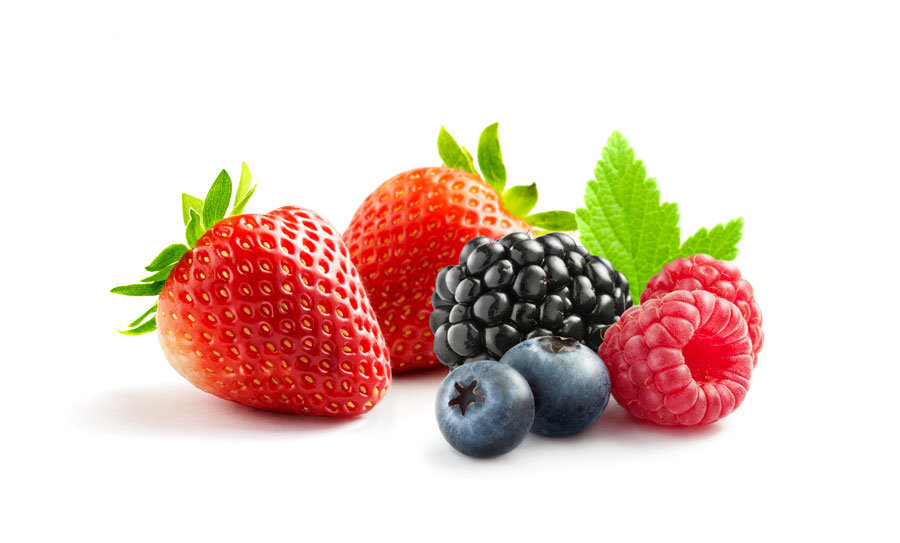
It’s summertime and berry season is upon us. Strawberries, raspberries, blueberries. The blackberries harvested here tend to be the Himalayan variety, hence no space will be devoted to words on how to encourage that pesky invasive.
The key to success with any of these berries is location, location, location. The quality of the soil and the right amount of sun are critical. Plant in the right place, pay attention to food, water and a bit of maintenance, and you will literally enjoy the fruits of your labor for years to come.
First, sun.
Sun exposure is measured by the hours of direct sun during the summer months, June through August. All the berries do best with at least six hours of sun a day.
Next, soil.
All of these plants need well-drained and moderately rich soil. Experts recommend digging in about 2 inches of manure when preparing beds. Strawberries and raspberries do best with a slightly acidic pH of 6.5. Blueberries need a pH of about 5. Lime can be added to raise the pH, or sulfur will lower it. Testing kits are readily available.
Finally, planting and maintenance.
Strawberries are a ground cover. Laurel Schultz, program director of Communities in Schools of Peninsula, grew up on a strawberry farm on Bainbridge Island. “My claim to fame is that when I was in the seventh grade I picked 2,800 pounds of berries and was able to buy the boots I wanted for school,” she said. Strawberries are either June bearing or everbearing. Schultz said that they raised June bearing fruit on the farm; the berries were ready to harvest at one time, were a little bigger, darker red, and have a longer shelf life than the everbearing varieties.
Her practical advice: When considering what variety to plant, decide if you want to harvest berries all at once or spread it out. Get starts with good roots, and when you plant be sure not to cover the crown with dirt. Pinch off the runners so that the main plant will put all its energy into growing berries.
After two or three years the June bearing plants tend to have fewer and smaller berries. Replace them when that happens. Slugs and birds are the main problems for strawberry growers. For slugs, Schultz uses beer traps. “But,” she said, “I can’t get slugs attracted to anything cheap. They like high hops beer.” For birds she thinks the best option is to have a big crop and plan to share. Hoops and netting can protect the fruit from birds if you prefer to keep the crop for yourself.
Raspberries grow from canes. As with strawberries, there are two types — June bearing, with one heavy crop, and everbearing, with two lighter crops — one in early summer and one in late summer or early fall. June bearing varieties grow fruit on two-year old wood, floricanes, branching laterally. Everbearing plants produce fruit early in the season on floricanes from the previous year, and then at the end of the season on new growth primocanes.
Claudia Steen, who coordinates the Yakima Valley Master Gardener Program, said that the first primocanes in the spring should be removed to encourage fruit development on the floricanes from the previous year, then limit the primocanes to the largest ones. Keep the primocanes pruned to a height of about 5-6 feet and support the canes so they don’t fall over. Fertilize in March, and mulch to keep moisture in.
Kip Clinton, who learned about raspberries from her uncle, has both types. She recommends alfalfa, once you are sure there are no seeds, as a mulch. In October, remove the old floricanes. and leave four to five primocanes per crown.
Blueberries are bushes. Jami Pragnell, who owns the Olalla U-Pick Blueberry Farm, said that when selecting plants, you should buy the biggest ones you can afford. “The root system is everything.” She grew up picking berries with her family and started with nine bushes in her own garden. She decided she needed more when she realized none of the crop made it to her freezer.
She and her husband planted an acre with 1,000 bushes in 2015 and opened their farm to the public five years ago. They have a number of varieties ripening from early July through August. She advises picking all the blossoms off for the first two years after planting to encourage root development. “It takes about three years before you get a decent crop.”
She recommends mounding the soil 6 inches at the base of the plant to protect low-lying branches from frost damage. She fertilizes with an acid-plant product in April, May and June, and uses mulch to retain moisture. Each plant gets a gallon of water per plant per week. After the third or fourth year, once the leaves have dropped, she removes old and spindly canes to allow for new growth.
UNDERWRITTEN BY THE FUND FOR NONPROFIT NEWS (NEWSMATCH) AT THE MIAMI FOUNDATION, THE ANGEL GUILD, ADVERTISERS, DONORS AND PEOPLE WHO SUPPORT INDEPENDENT, NONPROFIT LOCAL NEWS